Overview
Brightcove Beacon supports Server-Side Ad Insertion (SSAI) in Live events so server-side ads can be requested and displayed during a Live stream. Note: if you are using redundancy with SSAI, you must insert ads into all jobs in the group at the same time.
A high-level view of the process is:
- Create Ad Configuration(s) in Beacon Studio.
- Create a fill slate for your Live event in Beacon Studio.
- Create Live event(s) with SSAI enabled in Beacon Studio.
- Create ad configuration(s) in Beacon Classic.
- Create a channel that uses the ad configuration(s) in Beacon Classic.
- Publish the Live event to Brightcove Beacon in Beacon Studio.
SSAI provides these main features during Live events:
- Since ads are stitched into the Live video stream on the server-side, they are not affected by ad blockers.
- Ads are inserted at cue points sent from your encoder or you can create an instant cue point using the Live module Control Room.
- You can configure fill slates to fill any unused ad time.
Configuring Server-Side Ad Settings
Here you create an SSAI Ad Configuration to be used as your set of ads that are displayed in your Brightcove Beacon Live event.
- Log in to Beacon Studio.
-
In the navigation header, click ADMIN and select Server-Side Ad Settings. A list of all ad configurations are displayed.
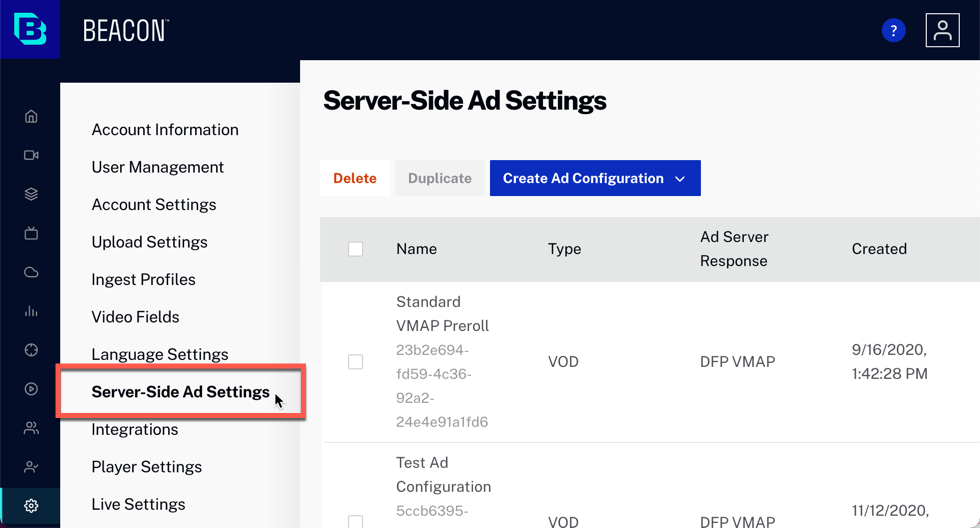
-
To create a new ad configuration, click the Create Ad Configuration button and select the type to be Live.
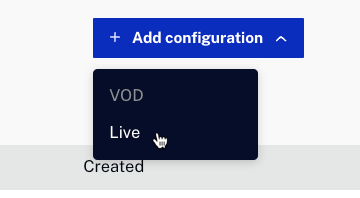
-
Check to be sure you are seeing the Server-Side Ad Settings form.
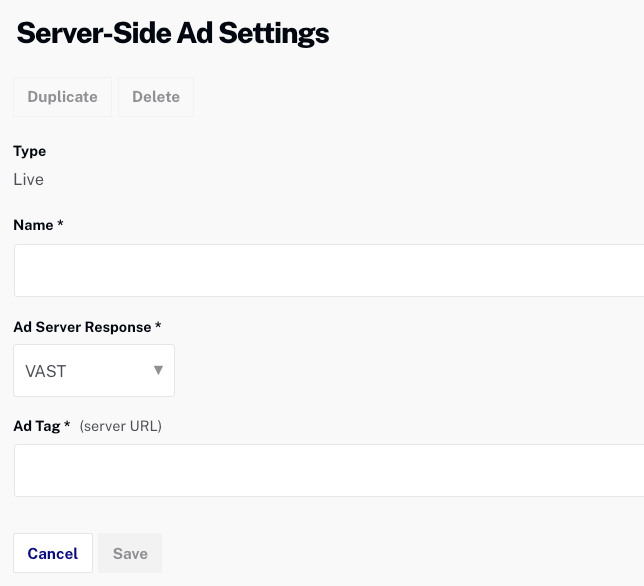
- Give your ad configuration a Name. If Roku is a targeted platform, you need to create two configurations. Naming them appropriately would be a best practice. For instance:
- Live - No DVR - All except Roku
- Live - No DVR - Roku
-
Select the Ad Server Response:
- VAST
- DFP (Ad Rules)
- Smart XML
- Enter the Ad Tag (server URL).
- Click the Save button.
-
Record the value(s) of your Ad Configuration ID(s). You use this in a later step.

Configuring a Fill Slate
Fill slates are videos that are displayed when there are gaps in a Live stream ad break that cannot be filled with a dynamically-served ad. If the requested ad is shorter than the Ad break time, the fill slate is displayed so viewers don't see a blank player.
To add a fill slate, follow these steps:
- Click the ADMIN > Live Settings link in the Beacon Studio.
- Click + Add Fill Slate.
- Enter a Name for your fill slate.
- Enter the Source URL for the slate.
- Click Save. The ingestion process for the slate begins.
- Be sure your fill slate has been added by checking the list:
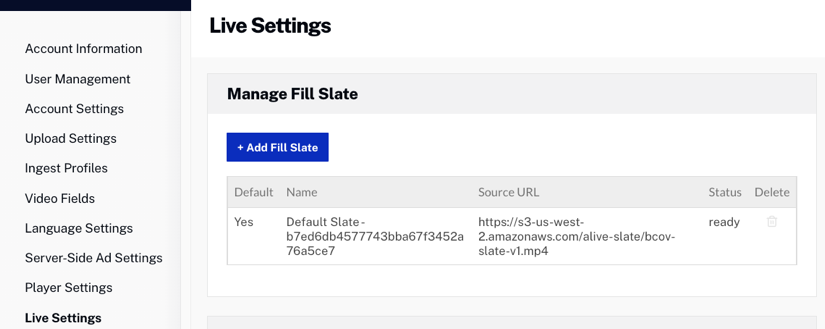
Creating a Live event that supports SSAI
In order for a live event to use SSAI (Server-side Ad Insertion), the Enable Server-Side Ad Insertion (SSAI) setting must be selected when the event is created, and a previously created fill slate should be chosen for playback.
Follow these steps to create an Event that supports SSAI ads in Brightcove Beacon:
- Open the Live module in Beacon Studio.
- From the Manage Events page, click Create Event.
- Enter your event details. For complete information on creating a live event using the Live module, please see Creating and Managing Live Events using the Live Module.
- Click ADVANCED OPTIONS to expand the advanced options.
- Check Enable Server-Side Ad Insertion (SSAI). This enables server-side ad insertion.
- Select a Fill Slate. The fill slate is displayed when there are gaps in a live stream ad break that cannot be filled with a dynamically-served ad.
-
When the Ad Audio setting is checked, the audio levels on ads are normalized based on the adjustment that is set. This can be used as a way to help make sure ads aren’t significantly louder than the content. Brightcove recommends selecting this option.
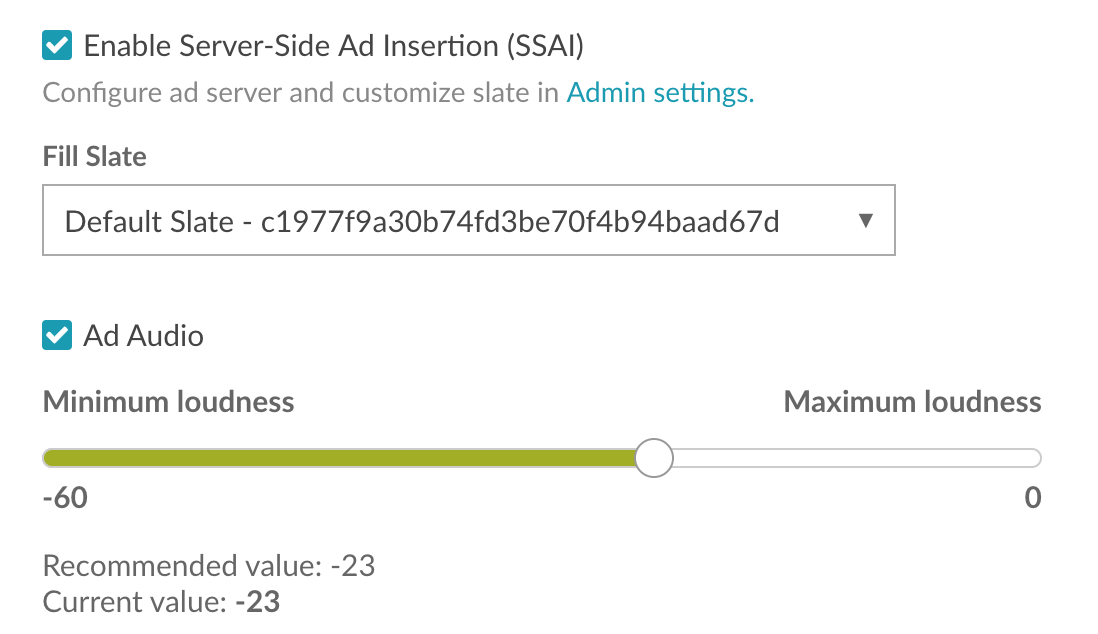
- Click Create Event
- The Control Room page opens with details about the Live event including the Streaming Endpoint (RTMP URL) and Stream Name. These values are used by the encoder.
- Click Publish and Embed.
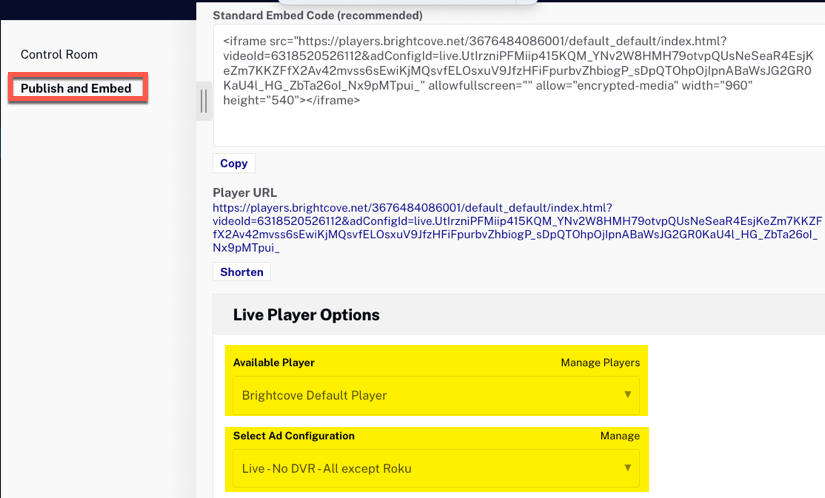
- As highlighted in the screenshot just above, select your Available Player.
- As highlighted in the screenshot just above, select your Ad Configuration.
- Record your Player URL as it are needed later.

- If you are targeting the Roku platform, add another event user your second, Roku only, ad configuration. Repeats steps 2 to 13.
Configure encoder
IF you are using an encoder and wish to start it, the steps in the section lead you through that process.
- Configure your encoder and start the Live stream.
-
By default, the Control Room preview player shows the ad-free stream. Ads are not shown in the Control Room unless a Live ad configuration is selected. Use the dropdown below to the player to select an ad configuration.
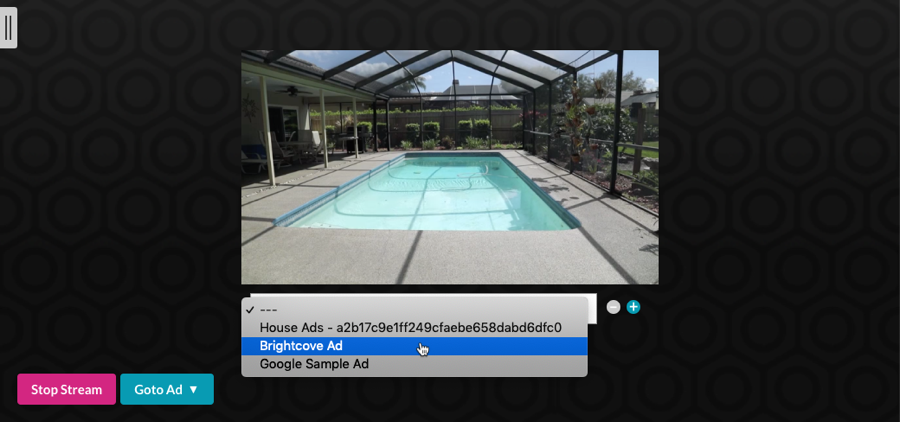
-
(Optional) Click the plus button (
 ) to select an additional ad configuration. Doing this adds another preview player on the Control Room page.
) to select an additional ad configuration. Doing this adds another preview player on the Control Room page.
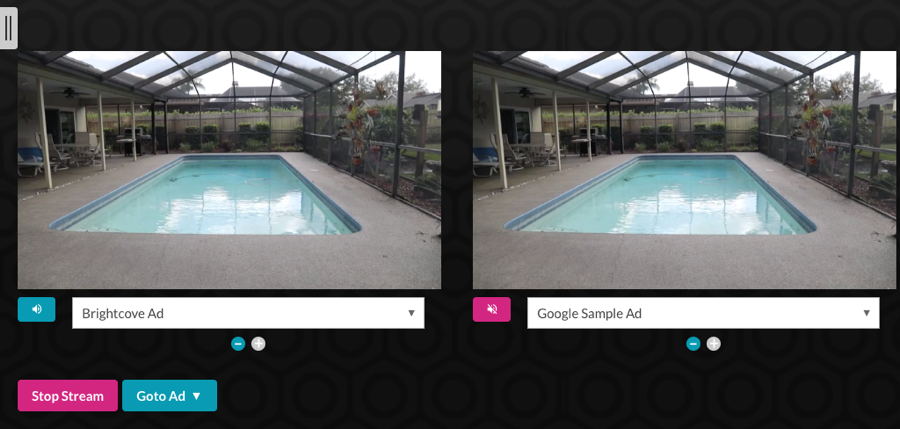
Click the volume button below the preview player to control which player audio stream is active.
Create ad configuration(s)
You create one or two ad configurations, based on your Roku requirements, then in the next section you create a channel that uses the ad configuration(s).
- Log into Beacon Classic.
- In Brightcove Beacon, in the upper menu, click the Advertisement tab.
-
Click the Add New Configuration button.

-
Check to be sure you are seeing the New Advertisement form.
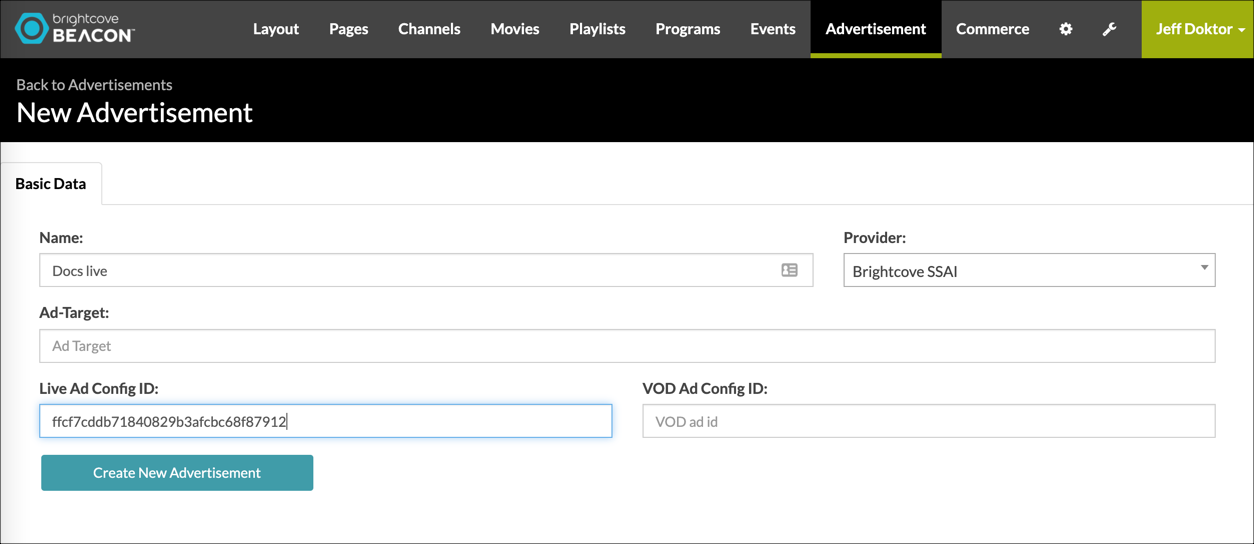
- Give your new advertisement configuration a Name. If you are using Roku, you are creating two advertisement configurations so be sure the names reflect an add configuration with and without Roku.
- The defaults for Provider and Ad-Target remain.
-
In step 13 from the Creating a Live event that supports SSAI section above, you recorded one or two player URLs, based on Roku needs. An example URL appears as:
https://players.brightcove.net/3676484086001/05eE9ou1hh_default/index.html?videoId=6318520526112&adConfigId=live.UtIrzniPFMiip415KQM_YNv2W8HMH79otvpQUsNeBaqe7QU0buFmq6DPUa2rHeV-k-F3tIZu1bXYBIafVamvirwzObGGUXVj7eDtP1j-4gOpsm0GRqUnOiMmIn the URL locate the adConfigId query parameter and copy everything after the equals sign. The copied string starts with live. For instance, from the URL above the copied string is:
live.UtIrzniPFMiip415KQM_YNv2W8HMH79otvpQUsNeBaqe7QU0buFmq6DPUa2rHeV-k-F3tIZu1bXYBIafVamvirwzObGGUXVj7eDtP1j-4gOpsm0GRqUnOiMm - In the Live Ad Config ID, paste the copied value.
- From the Provider menu select Brightcove SSAI.
- Check to be sure our completed form appears similar to the following:

- Click Create New Advertisement.
- If Roku is a targeted platform, repeat steps 2-11 to create a second ad configuration for Roku only.
Create a channel
In this section you create a single channel with either one for two Right sets. You create two if you are targeting the Roku platform.
- In Beacon Classic, in the top menu click Channels.
- On the Basic Data tab give the channel a name. In this document the name Live SSAI - No DVR - Channel is used.
- For the CloudPlayOut Channel ID enter your appropriate ID.
- Add Textual Data and Non-Textual Data as desired.
- Do not make changes to Tags or Streams.
- Click the Rights & Scheduling tab.
- Complete the form. The key values are highlighted. Note the values shown are for the all but Roku use case.

- If Roku is a targeted platform, click Add new Right.
- Complete the form. The key values are highlighted. Note the values shown are for the Roku use case.
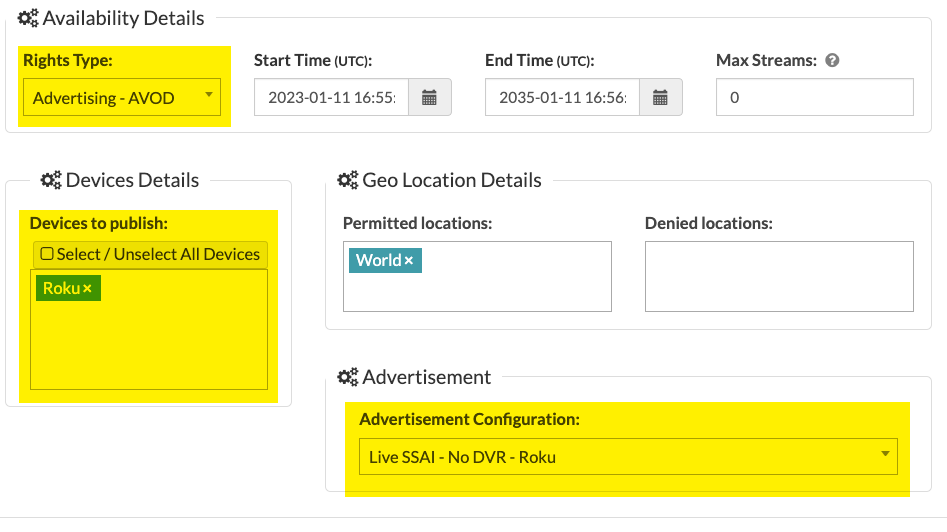
- Click Create New Channel or Update Channel if you have previously saved.
Updating the ad configurations
There are two properties and associated values that need to be set on your ad configurations. The only way to do this is using the Live API. The following form requires you to provide some information, then calls the Live API to set the values for you.
The process will be as follows:
- Contact Brightcove Support and create a case to retrieve your Live API Key. Be sure you mention that you will be setting the property
ad_configuration_client_sdk_enabledtotrue, so you will need Client SDK integration. - Paste your API key into the form, then click the Retrieve Ad Configurations button.
- You will see radio buttons appear in the Choose your Roku ad configuration and Choose your All Except Roku ad configuration sections of the form.
- Check the appropriate button for either/both, then click the Assign Property Values button.
- Hopefully you will see updated messages for the number of buttons you selected. If you see errors, please contact Brightcove Support.
If you have any doubts about the process, or just want to see an example, watch the following short (1:24) video:
Update Values Form
Live API Key:
Select region:
Choose your Roku + ad configuration
Choose your All Except Roku ad configuration
Summary Responses
Requesting an ad
Follow these steps to request an ad in the Live Control Room:
-
Click Insert Ad and from the dropdown choose the length of your desired ad break.
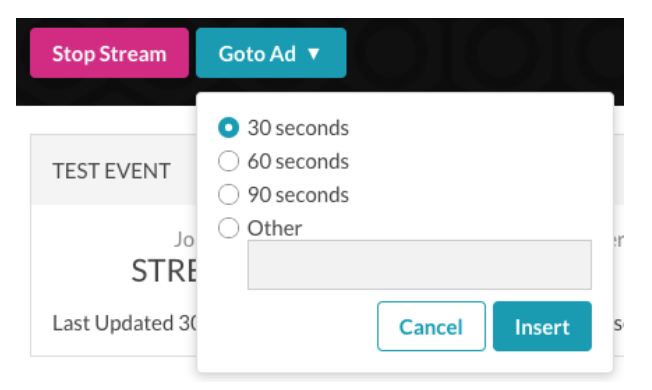
- Click Insert to insert an ad break into the live stream. If the ad doesn't fill the entire ad break time, the fill slate (being selected when the event was created) is displayed.
Ads are seen in the Control Room preview player and in players that are published using the Live module. This example shows 2 ads being displayed in the Control Room.

Publishing a Live event in Brightcove Beacon
To publish your Live event with server-side ads in Brightcove Beacon, follow these steps:
- In the Live Control Room click Publish and Embed in the left navigation.
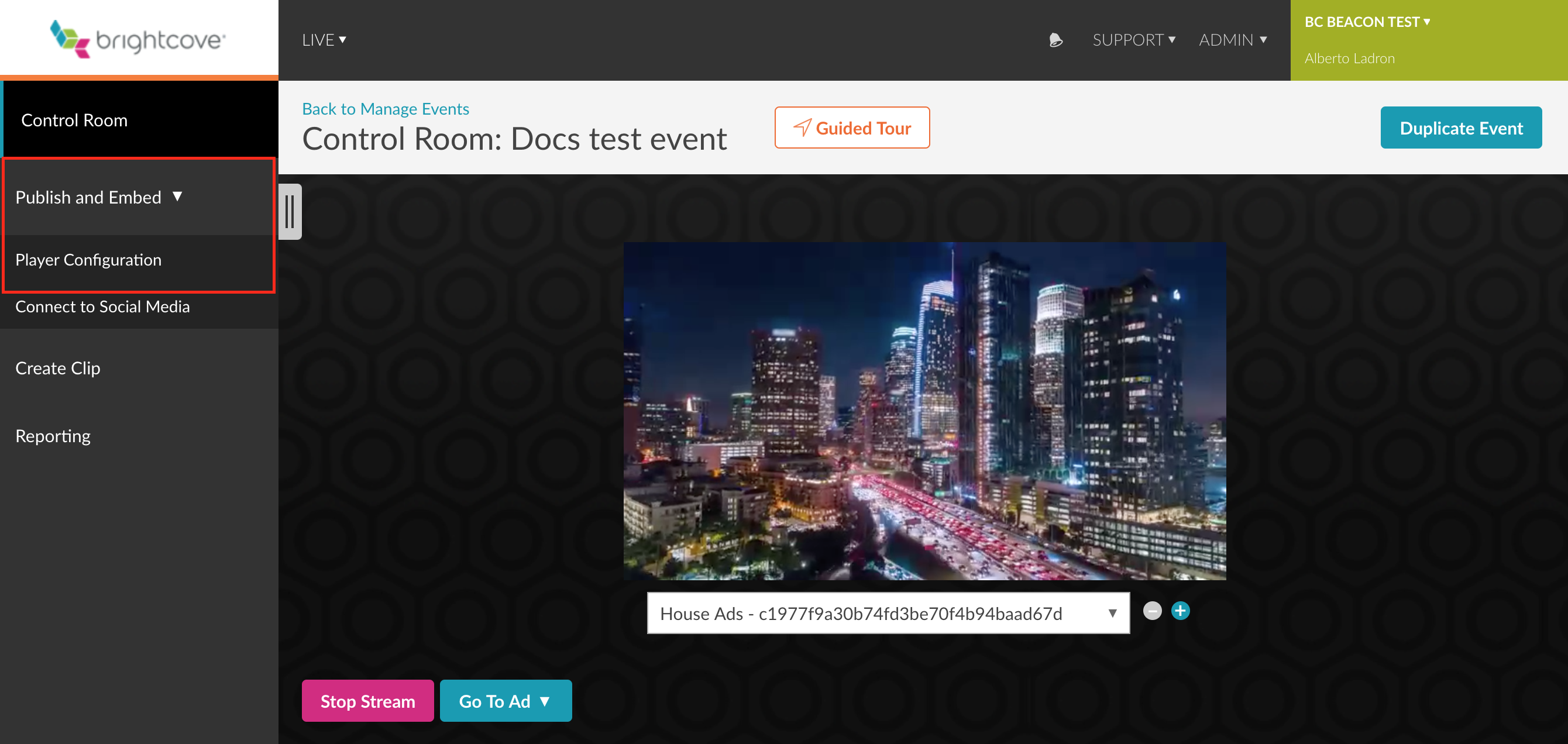
- In the Live Player Options select an Available Player.
-
Select your Ad Configuration previously created in the Server-Side Ad Settings.
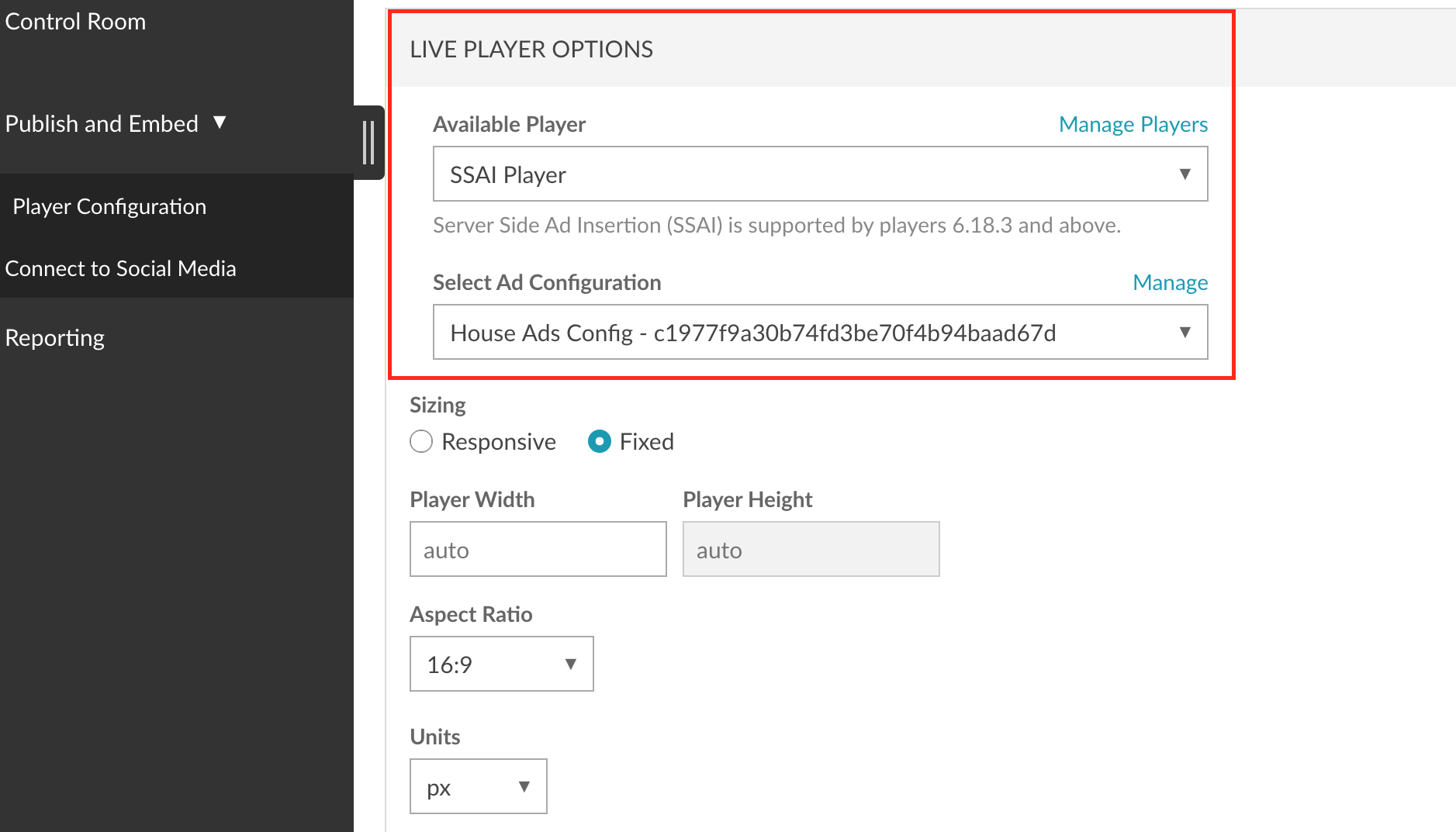
- After selecting your Available Player and Ad Configuration, a new Player URL is generated.
-
Click on the Tools (wrench) button in the upper right of the screen. Then clear the cache.
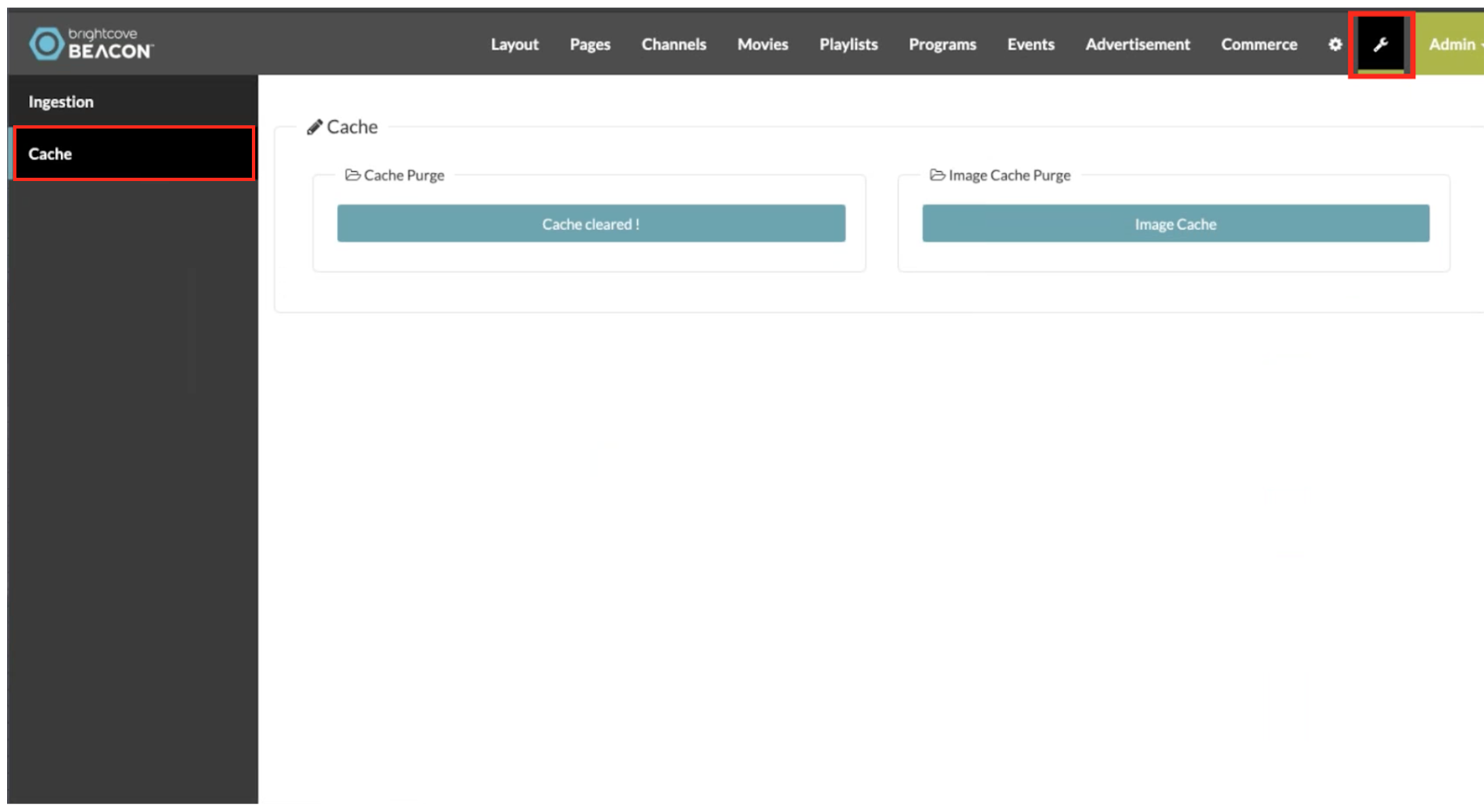
-
Open your Brightcove Beacon App and select your event (the event names and pictures on the image are for example purposes only).
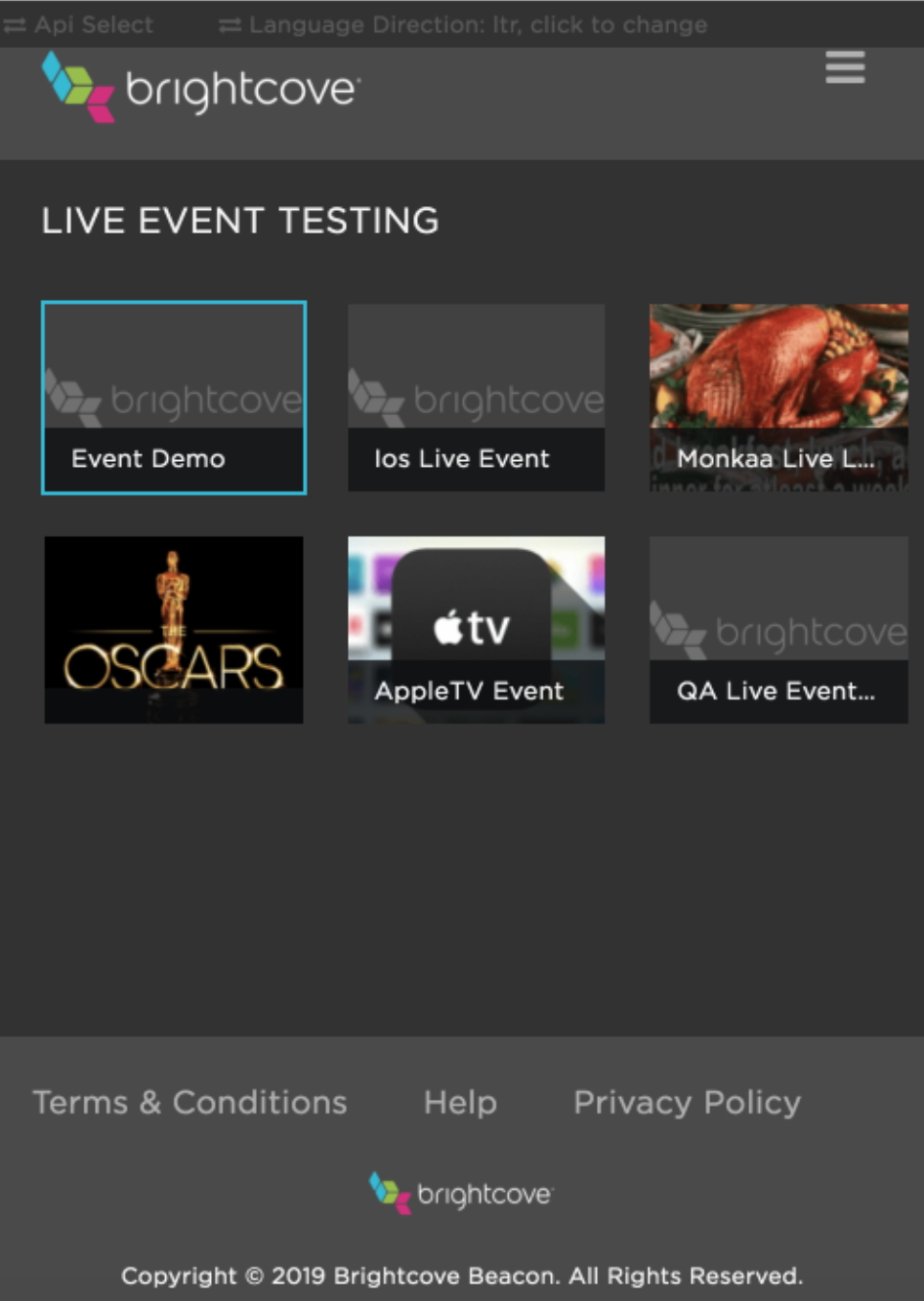
- In your Brightcove Beacon app, click on the Play button. You should now be able to see your Live event streaming, with ads inserted by SSAI from Video Cloud.
Once your event ends, you can save all or part of it as a clip that becomes a video asset in Video Cloud or a playable stream that can be shown in Brightcove Beacon. The Ads of the Live event are not saved, but the cue points from where the ads were transmitted are registered so that you can add new ads in a later VOD of your recorded Live event.
For more information on how to create a clip, please see the Creating a Clip from your Live event section from the Streaming a Live Event document.
